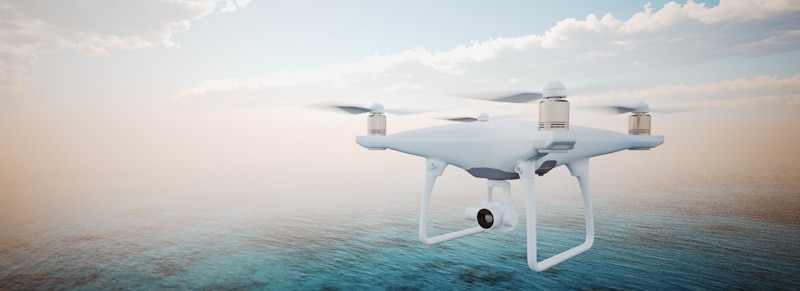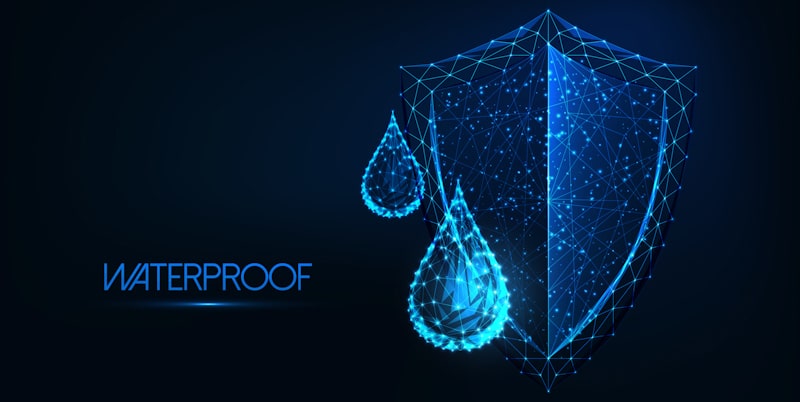When you wish to take a picture or a video and it is either raining or snowing, you must make use of a waterproofed drone. However, most drone pilots do not know how to waterproof a drone so they are unable to use their drones in the rain or snow thereby limiting their work. In this article, we will explain all you need to know about waterproofing a drone.
One effective way of waterproofing a drone is by using a silicone conformal coating to cover all sensitive electronic parts of the drone and sealing it up with corrosion-x HD. With these two, you can still carry out normal repairs on your drone. This prevents water from entering the drone.
It is very dangerous to use a drone in water without waterproofing it first. If you use a drone that is not waterproofed under rain or snow, the drone will likely be damaged beyond repair and condemn it to never working again. To avoid this from happening to your drone, we will provide all insights on how to waterproof your drone yourself.
Procedures To Follow On Waterproofing A Drone
Before we talk about how to waterproof a drone. We will first look at what it means to waterproof a drone.
When you say you want to waterproof a drone, this means you want to make the drone water-resistant i.e. when the drone comes in contact with water or moisture, it is not affected by the liquid so no damages are caused to the drone.
To waterproof your drone, you need two main constituents which are:
- A silicone conformal coating
- A rust and corrosion preventer.
You will also need a dry cloth or rag to prevent staining your fingers.
First, to use the silicone conformal coating, you need to:
- Remove the coverings and heat shrink from the circuit board of the drone.
- Thoroughly clean the circuit board using alcohol and a toothbrush or a q-tip.
- Apply the silicone conformal coating over all the electronics except for the buttons, connection ports, and sensors.
- Let it dry for like half a day.
You can check for any missed spot on the circuit board by using a black light. The silicone conformal coating is used to prevent water from entering the sensitive parts of the drone that can easily be damaged.
Using the rust and corrosion preventer is optional but it is advisable because it prevents the drone's connectors and sensors from rusting. The preferable rust and corrosion preventer for drones is the Corrosion X-HD.
Using the rust and corrosion preventer on your drone is a very easy step. All you have to do is to apply a small amount to all the other parts of the drone that you did not use the silicone conformal coating on. This includes the sensors, buttons, and connections port.
Because the rust and corrosion preventer is a little messy, you should work on a paper towel and apply it in little amounts. It does not have a drying time, it dries as you apply it so you have to be very careful.
You might also need to make some modifications; such as a Getterback or floating drone landing gear; to your drone to make sure it does not sink when dropped on water.
Getting a waterproofed drone is very expensive, but with the steps above, you can purchase a drone at a normal price and make it waterproof by yourself without paying a large sum of money to anyone.
Waterproofing your drone is done at your own risk. If any mistake is made. You cannot return the drone to the company as it is not part of the guarantee.
Can A Drone Get Wet?
Yes, a drone can get wet. Although most drones are not designed to get wet, they can still be flown when it is raining. We all know that electronics and water are not compatible, hence you must keep your drone far from water so that it does not soak unless it is waterproofed.
Water causes a lot of damage both visible and unseen to your drone. It is difficult to say how much water is needed to cause damages in a drone. But, you should keep your drone far from water, don't fly in the rain, mist, moisture, or snow.
You are taking a big risk by flying your drone in an area it will likely get wet, the chances of rust and short circuits occurring are very high.
It is almost impossible to avoid moisture no matter the environment when flying your drone because we all fly drones outside. This makes your drone liable to different sources of water like humidity, dew, snow, and even rivers or ponds.
Hence, you must waterproof your drone. However, there are procedures to follow if your drone gets wet which will be stated below.

If your drone gets wet, here is what you should do:
- Immediately remove it from the water or the liquid.
- The first thing to do is to power down your drone, remove the battery carefully and check if the battery has been damaged. If it has put it somewhere safe because it can explode or better still dispose of it immediately.
- Next, dry off any visible water with a dry cloth and check for any water visible on the motor. Put the drone in a warm, ventilated, and dry area to speed the drying process.
- Remove the top cover of the drone and place the drone inside a tub or bowl filled with raw rice.
- Until the drone is completely dry, do not turn it on. When it is dry, power it on without the top cover and check for any short circuit or flame. If there is, power the drone off immediately.
- When test-running the drone to see if it is fully dry, make sure you check for any smoke weird behavior, funny smell, or strange sound to know if there is any internal damage.
If you are not sure about the amount of damage that has occurred with your drone, you should send your drone to a drone repair shop for further inspection. Also, do not forget to disclose to the repairer how the crash happened and the type of water it fell into. This helps the technician know what to do to fix your drone.
The type of water your drone falls into also matters. If your drone falls into salt water, the damage is more than that of freshwater. Saltwater is highly corrosive and electrically conductive so the damage is higher.
If your drone comes in contact with salt water, make sure you rinse it with distilled or fresh water to wash out the saltwater. It is better to be safe than sorry when it comes to the matter of your drone getting wet.
There are lots of electronics in your drone that can be damaged as a result of being wet. Some of them might have to be replaced because they are damaged beyond repair. The lens and the sensor of your drone will be seriously affected by the water which is why you need to dry immediately.
Before flying your drone over water, double-check it. Make sure you perform a thorough pre-flight check before flying to avoid any accidents that can cause it to crash into the water.
Are DJI Drones Waterproof?
No, DJI drones are not waterproof. DJI drones are one of the world's leading producers of camera drones in the technology industry. This is because of their portability, smooth flight, aesthetic design, camera, ease of use, and the general performance of the drone.
Most people that do photography and film make use of DJI drones. Although DJI drones have a lot of good features, they are not used for professional filming, however, they are perfect for recreational and personal use.
Some DJI drones include:
- Mavic 2
- Spark
- Mavic Pro Platinum
- Inspire 2
- Mavic Air
- Phantom 4 Advanced
- Inspire 2 Premium
- Phantom 4 Pro V2.0
- Inspire 2 Professional
One of the reasons the DJI drones are not waterproof is because they are expensive. The DJI industry is willing to be on a safer side with their drones so that they do not fail their clients if the drone spoils as a result of falling into the water.
DJI drones are among the most expensive drones in the world, but they are neither waterproof nor water-resistant. The drones cannot even float on water and there is some hypothesis to support the reasons.
- First, nobody wants to ruin their drones by testing the durability underwater. With the cost it takes to produce a DJI drone, making it waterproof will increase the cost and the customers are not ready for that type of increment yet.
- The drones have technologies that will aid in protecting them from colliding with obstacles. There are smart features in-built in the drone that will make it avoid obstacles, and it can also return home when lost out of sight or low on battery.
Although it does not look like DJI would start producing waterproof drones now, there could be a possibility it will be in production in the nearest future.
DJI drones are complex machines loaded with technology, so they must not get wet. Anyone who purchases any of the DJI drones is advised to make sure the drone stays clear of liquid so that it can perform its function accurately.
What Other Electronics I Can Make Waterproof
Electronics or electronic devices are devices that use electric current to encode, analyze, and transmit information. They are usually designed with silicon chips or transistors that change and regulate the electric current flowing through the device.
While there are some electronic devices you can make waterproof, there are others you cannot. The preferable way to use electronics that cannot be made waterproof is by completely keeping them away from water.
We will make a list of electronic devices you can make waterproof, how you can make them waterproof, devices you cannot make waterproof, and how to prevent water from damaging them.
First, we will look at some devices that you cannot make waterproof.
- Oven- You cannot make an oven waterproof, there is no way to currently make your oven waterproof. The only option you have is to build a protective cover or a brick shelter over the oven if you want to use it outside when it is either snowing or raining.
- Fan- You cannot make an indoor fan waterproof because it was never designed to come in contact with water. But if you need a fan you can use outdoors, there are lots of amazing waterproof outdoor fans you can get and they are perfectly suited for any purpose and place.
We will examine some electronics you can make waterproof and how you can do that. In reality, you cannot make an electronic device waterproof, you can only make it water-resistant or increase the water resistance. Nevertheless, these are electronics you can make water-resistant.
- Mobile phones- You can increase your phone's resistance to water by making use of either custom model-specific cases or dry bags. For the former, there are lots of water-resistant cases you can purchase in the store for your mobile phones. While for the latter, there are cheap smartphone-sized dry bags that will fit your phone perfectly and protect it from water damage.
- Laptops- There are three ways to make your laptop water-resistant. First, you can use silicone or plastic wrap to cover the keyboard, it covers both the trackpad and the keys but you can still use your laptop to work. You can also use a waterproof case that fits over the top and bottom halves of your laptop. The last option is to get a neoprene cover to protect the laptop from external elements.

These are the electronic devices you can make water-resistant, the others require external protection against water.
Final Thoughts
You are outside on a cold snowy night, looking at the stars, and enjoying the view, and you feel you need to take a nice aerial photo of the view. You pick up your drone but you do not know if your drone is waterproof and will not be damaged by the snow.
After finding out your drone is not waterproof, you need a way to make it waterproof. Knowing how to waterproof your drone is vital, but it is also essential to be aware of the do's and don'ts of waterproofing a drone.
Shawn Manaher loves to play with new toys and dive into new hobbies. As a serial entrepreneur, work definitely comes first but there is always room for hobbies.


